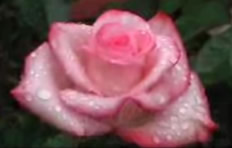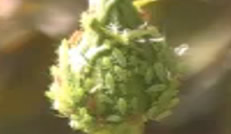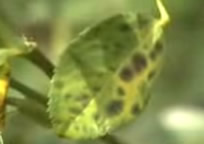Have you ever wondered why some of the rose gardens you see have such beautiful large healthy roses growing in them, yet your own roses are only small growing and only pop up once in a while? There is no major secret to growing the perfect rose, no tricks, just good know how.
Read on to find out how to convert your own rose garden into a rich, colourful wonderland that will be engrained in the memories of all who have seen it.
Purchasing roses

When purchasing roses, there are a couple of things that need to be taken into consideration.
Roses are often sold riddled with diseases. When you buy a rose, it is essential that you make sure that the plant has perfect foliage with spot free leaves. Avoid anything that looks remotely out of the ordinary such as dimples in the leaves or even dried out leaf tips. Although dried out leaf tips can be, and usually are a sign of overwatering, this can also be a sign of disease. If you purchase a diseased rose, you will then need to buy additional products in order to cure that disease and you also risk passing that disease onto other roses in your collection. Be sure to purchase roses from your local nursery. Nurseries sell plants suited to local conditions, therefore if you buy a rose locally, you know that it will survive and flourish in your area.
Types of rose
There are thousands of types of rose in existance with new species being bred daily and hence, to create a list of all of these would be a very large job to say the least. Provided below is a broad list of some of the major varieties or rose.
Soil conditioning
A rose as with any other plant needs a readily accessible supply of water and nutrients to feed to its foliage and flowers, and high quality well suited soil gives it the ability to draw these nitrients. It is often said that the rose is best planted in clay soil, which is certainly not the case. Roses can tolerate almost all soil types, but prefer well drained yet water retaining soil rich in organic matter. A mixture of 50% compost, mulch and humus, added to 50% clay, sand and silt, is probably the most suitable soil for a rose. As long as you keep the soil to a 50% organic, 50% non organic mixture it should be sufficient. If nutrients are lacking, cow manure can be added.
Preparing a suitable site to plant roses in

Roses need at least 4 – 6 hours of direct sunlight each day in optimum conditions, so any site that a rose will be planted in needs to be able to provide this. Try to choose a site that is facing the afternoon sun in cooler climates and morning sun in warmer climates.
Conditions such as soil quality, and growing space for new foliage and roots will also need to be taken into consideration. If roses are planted in close proximity, they tend to spread both pests and diseases to each other. If the foliage of one rose has grown into that of another and conditions are moist and humid, fungal diseases are likely to develop. This means that sufficient spacing is necessary to help air circulation. The amount of spacing between different species of roses will vary greatly, some roses will grow to be small in width and therefore spacing will be to a minimum. General research will need to be carried out on the specific rose types that you will be planting although the label found on purchased rose pots will in most cases have the information that you require.
If your selected planting site does not contain the appropriate soil (see soil section above), you may need to enrich the soil. This can be done by either removing the old soil completely, or by means of removing some of the old soil and mixing in the ingredients needed to improve it. In coastal climates most roses will suffer due to the salt filled air. Certain varieties like rugosa roses can be chosen to tolerate salt air and will flourish in these conditions.
Propagating roses
Roses are most suitably propagated by cutting. Not only is this method of propagation easier, it is also quicker to grow mature plants and has the highest success rate.
Using a sharp pair of secateurs, cut away a stem to a length of around 15 centimetres or so.
The stem taken should be of newer, non woody growth and the cut should be on a 45 degree angle.
Remove all but a few leaves from the cutting and minimise branches, no more than two or three is suitable.
Dip the base of the cutting in rooting hormone and place it around 5 centimetres into soft well drained yet water retaining soil (compost is usually the best). Water the cutting regularly to ensure that the soil does not dry out. After a few weeks the cuttings should take to the soil. Once the new roses are well established they can be transplanted into new pots or into the ground, but it is best to let the plants become root bound before doing this. There are other propagation methods suitable for roses such as seed or grafting, but cuttings are by far a better method being simpler and highly reliable when done correctly.
To find out more about propagating roses via cutting click here.
Mulching
Mulch provides a home for natural predators and an ongoing supply of nutrients as the organic matter breaks down into the soil, as well as retaining moisture in the soil and keeping weeds at bay.
The best mulch for a rose is by far compost as it is abundant with nutrients and is free and easy to make. Alternatives to compost mulch include wood chip, lawn clippings (may contain unwanted weed seeds) and just about any other organic substance you can find with a mulch like texture and nutrient rich content.
Roses in pots
Roses generally thrive in pots with similar or equal results to those grown in the ground, provided that quality soil is provided and sufficient water and fertilizer is supplied. Pot size is certainly important when growing potted roses. Large, bushy rose varieties will require significantly larger pots than smaller growing types or standards which have smaller root balls to support minimal foliage.
Pests
A rose plant cannot perform at its peak if pests are constantly sucking its well needed nutrients let alone ruining its appearance. Control of all pests is essential in growing those fantastic roses that you desire so much.
Organic control is always to be preferred in order to maintain soil quality and help natural predators to flourish.
Aphids
 Aphids are probably the most common pest to effect roses. They are tiny insects ranging from green or brown, and survive by piercing new shoots in order to suck the sap from them. This feeding process, in turn damages both new and old growth by reducing nutrient flow throughout the plant. Aphid colonies can appear to pop up over night, luckily controlling aphids is a lot easier than other pest control related to roses. There are many natural predators that aid in reducing aphid numbers such as ladybugs and their larvae, but if these predators are not plentiful in your garden there is a much quicker cost effective control method. Simply spray the foliage of the rose with soapy water, making sure not to miss the underside of the leaves or any other hidden areas. Leave the soapy water for a few minutes and hose the plant clean of any soap and aphids. The aphids are usually too small and weak to crawl back onto the rose and die quickly without food.
Aphids are probably the most common pest to effect roses. They are tiny insects ranging from green or brown, and survive by piercing new shoots in order to suck the sap from them. This feeding process, in turn damages both new and old growth by reducing nutrient flow throughout the plant. Aphid colonies can appear to pop up over night, luckily controlling aphids is a lot easier than other pest control related to roses. There are many natural predators that aid in reducing aphid numbers such as ladybugs and their larvae, but if these predators are not plentiful in your garden there is a much quicker cost effective control method. Simply spray the foliage of the rose with soapy water, making sure not to miss the underside of the leaves or any other hidden areas. Leave the soapy water for a few minutes and hose the plant clean of any soap and aphids. The aphids are usually too small and weak to crawl back onto the rose and die quickly without food.
Pyrethrum and dipel are both highly effective in ending aphid infestations as well and can both be purchased in most hardware stores and plant nurseries.
Scale
Scale derives its name from its appearance when in large numbers, covering entire areas (usually stems and trunks) in a scale like pattern. Scale can be seen in colours ranging through gray, brown, red, black or white and are usually one to three millimetres in length.
They are easily spread from plant to plant by means of birds, wind, and even ants which farm scale as it produces honey dew from the plant, a source of food for the ants.
If a scale numbers are left to expand, they can eventually kill an entire plant. Oil and soap sprays are usually the most effective weapon in combating scale. Apply soap as with the aphid control method mentioned above. Oil spray can be purchased from your local nursery and directions should be followed from the label.
Caterpillars
There are several species of caterpillar that enjoy munching on the flowers and greenery of roses.
Due to there being so many different types of caterpillar throughout different regions, there are multiple ways to remove varying species. Generally, dipel and pyrethrum are suitable methods culling caterpillar plagues, but removal by hand of eggs and larvae is often preferred. It can be difficult to locate caterpillar eggs, they are usually concealed beneath the leaves of the plant. Eggs can be crushed or scraped away, but it is certainly easier to just remove the infected leaves.
New born caterpillars are often tiny and near impossible to see. It helps to look for damaged leaves which are often hiding a hungry caterpillar.
Spider mites
Spider mites are tiny little arachnids that eat away at the surface of foliage and sometime flower petals. There are thousands of species and therefore thousands of different appearances that they have. Spider mites cause a fine spotting effect on the plant matter that they feed on.
The best control for spider mites is natural predators. There are many different species of predatory mite that live in mulch and topsoil that feed on spider mites. By keeping a steady supply of mulch around the base of the rose, you may be able to completely avoid having to deal with spider mites in the first place. The mites can also be removed by spraying down the plant with a hose each day for around a week or so.
Borers
Borers are a group of pests made up of the various larvae of certain wasps and beetles. Usually hidden within the stems of the rose, borers feed on the inside of the stems and are caple of killing an entire rose in days if there is a sufficient infestation.
A common sign that borers are active in your rose is stems and foliage appearing to die over night.
To test for borer, bend a recently dead stem, if it is hollow it will snap and reveal this.
The best removal method for borer is to completely remove all infected branches. If you fail to remove all of the borers, your plant will continue to die off, so it is important to be very thorough.
Diseases
Roses are extremely prone to disease. Winter is a perfect climate to assist in the development and spread of disease amongst roses due to damp conditions. Pests aid in the spread of disease by carrying it disease spores to new areas of the rose and spreading the disease to other plants.
Although roses are affected by an oddly high amount of diseases, we can only list a few here today, otherwise this page would go on for days!
Black spot
 Black spot is by far the easiest disease to recognise on a rose, often seen as black spots on the foliage of roses varying in size with yellowing around the spots. This disease is highly contagious amongst roses and should be treated with care to avoid spreading.
Black spot is by far the easiest disease to recognise on a rose, often seen as black spots on the foliage of roses varying in size with yellowing around the spots. This disease is highly contagious amongst roses and should be treated with care to avoid spreading.
All leaves with any trace of black spot should be removed from the rose and put in the bin.
If any infected leaves are left on the ground the disease will re-appear so it is essential to make sure no diseased leaves are left lying around. Coating any remaining leaves and shoots in an all purpose rose spray will help to ensure that the black spot does not re-occur.
Powdery mildew
Powdery mildew causes rose leaves to become twisted and sometimes bumpy. The leaves become covered in a white powdery mildew which can sometimes rub off when touched. The disease can be spread via the wind. Treatment can include fungicides, but the best method is to remove all infected leaves and throw them away. This disease is most active in summer. Missing any infected leaves can cause the disease to re-occur.
Rust
Rust is a disease resulting in red to orange tiny bumps appearing on the foliage of the rose. The disease can be removed by means of removing infected leaves as with black spot and powdery mildew, but a mixture of sodium bicarbonate and water can be sprayed onto leaves to help fight the disease, providing that the plant has sufficient time to dry.
Pruning roses
Pruning a rose encourages new growth and bigger better flowers, and also helps to reduce disease risks. Roses need to be lightly pruned a couple of times a year, and also require a heavier pruning during winter. When pruning a rose, cut just above a node (tiny line where leaves / stems etc grow from). If you don’t do this it will result in long dead stems which are not a major problem, but can certainly look unattractive.
Remove any spindly stems and branches around the inner area of the rose, this is important to ensure that the plant focuses its energy on the important areas that will soon develop those large roses and fresh greenery.
Pruning standard roses
It is a common misconception that standard roses are a particular cultivar of rose, and that they just grow a long stem with a ball of foliage and flowers at the top, but this is certainly not the case.
Standard roses are grown and pruned specifically to look the way that they do, and almost any rose other than groundcover varieties and a few others can be made into a standard rose.
To create a standard rose, the side branches need to be cut away leaving a long stem and a few side branches at the top. If you would like a taller stem on your standard rose, let the plant grow taller and repeat this process.
To maintain a standard rose, general pruning of the leaves and stems are required, just make sure that the main thick branches are left untouched so that the rose can redeem its ball like shape when it grows back.
You may need to take a step back and visualise the way you want the rose to be after you prune it, then cut away excess length to bring the visualisation into action. After a bit of practise you will be able to prune without even really having to think about it.
Rose care
Once planted in suitable conditions, you rose garden will need regular care to maintain health. Provided that you regularly fertilise, prune and water your roses, they should provide beauty for many years to come.
Watering
Roses can have very large root systems when they are well established, so they need to be supplied with a sufficient amount of water to reach their deeper roots.
If too little water is applied to the rose its root system will grow near the surface of the plant where it can easily find water. This will cause the rose to dry out quickly in hot summers.
Make sure that you water large roses for at least a minute to really make sure that the water seeps down deep into the soil. Well draining soil will help to absorb the water and reduce runoff.
It can help to run a tube from the base of the rose’s rootstock to the surface above when planting. This helps to easily supply water to the deeper roots of the rose without needing to water it for such a long time. Roses prefer less frequent watering, so a heavy watering every week or so in summer is usually a suitable pattern. Avoid watering the foliage of the plant, especially at the end of the day. Failing to do this can easily result in disease.
Fertiliser
Fertiliser is an essential ingredient to grow impressive roses.
There are plenty of different rose fertilisers on the market and most of them are pretty good, but you should try to use organic fertilisers if possible as they don’t upset natural predators.
Compost is also a great source of nutrients for roses and should be added to topsoil every half year.
The amount of fertiliser needed will vary depending on the specific type used, therefore the best dosage is that recommended on the label.
Regular applications of dynamic lifter and blood and bone can be highly beneficial.